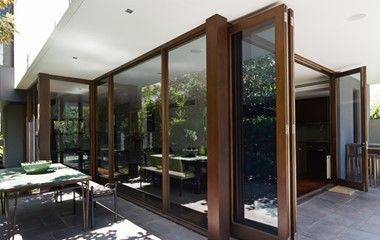All Categories
Featured
Table of Contents
Single, Double Or Secondary Glazing, Which Is The Best ... in Mundaring WA
That window can send more solar heat in winter than in summertime. A west-facing window on a summer season's afternoon has an angle of incidence from near 0 up to 30 with a large reliable location of solar radiation. A north-facing window, in summertime, has a high angle of occurrence and a low efficient area of solar radiation, so can send less heat than a west-facing one.
![Best Way To Block Sun Heat From Windows [Professionally] in Connolly WA](https://www.doubleglazingfunding.co.uk/wp-content/uploads/2019/06/Brown-composite-door-second-angle.jpg)
You can quickly and quickly improve the thermal performance of your house by replacing your windows. There are thousands of types of glass and frames to pick from.
A Complete Guide To Double Glazed Windows in Watermans Bay WA
There are various kinds of glass items to select from. Single glazing utilizes a single pane of glass. Single glazing with clear glass is not very efficient when it comes to heat loss or gain. To improve performance, you can utilize single glazing with a more energy-efficient kind of glass such as low emissivity (low-e) glass.
The energy efficiency of IGUs also depends on: the residential or commercial properties of each layer of glass. Various glass types (for example, clear and low-e glass) can be put together in an IGU.
Double Glazed Windows – Their Amazing Benefits For ... in South Fremantle Perth

IGU cavities can be filled with air or a more inert, low-conductivity gas such as argon the width of the cavity. Cavity thickness is typically 6 to 18mm. Broader cavities provide lower (better) U values, with 12mm typically accepted as the preferred space how well the cavity is sealed. Cavities should be dry and well sealed to avoid moisture getting in.
If argon is set up to the cavity in place of air, wetness is dependably omitted the level of desiccant (drying representative). The spacer (metal or polymer strip) that separates the glass layers consists of a desiccant to absorb any wetness. Inadequate desiccant may trigger wetness to condense on the glass surface area in cold conditions, lowering thermal performance.
Double Glazing Perth in Mundijong Western Australia
IGUs can deliver much better energy performance for all environments, particularly in heated and air-conditioned houses. Cross-section information of single, double and triple-glazing systems Low emissivity glass (frequently referred to as low-e glass) reduces heat transfer. Low-e glass may be either high or low transmission: High transmission low-e glass has a coating that enables daytime from the sun to enter your home to achieve good solar heat gain, however lowers the quantity of the long wavelength infrared heat that can leave back through the window.
Low-e glass has either a pyrolytic covering or a vacuum-deposited thin film metal finish. Pyrolytic finishes are durable and can be utilized for any glazing; vacuum-deposited finishings are soft and are just utilized within IGUs. Low-e coatings can substantially improve both U value and SHGC; however, they should be utilized correctly or they will either weaken or stop working to carry out as required.
Sustainability in Bullsbrook Perth
Low-e finishings can be used in mix with clear, toned or reflective glass. Low-e coatings on glazing can decrease heat transfer where required Photo: Department of Market, Science, Energy and Resources Toned glass has colouring additives consisted of during manufacture. It is available in various colours, typically bronze, grey, blue and green.
Latest Posts
Double Glazed Windows in Floreat Perth
Insulated Glass Unit – Igu in Lathlain Perth
What Is Triple Glazing? - Infinite Windows in Attadale Perth